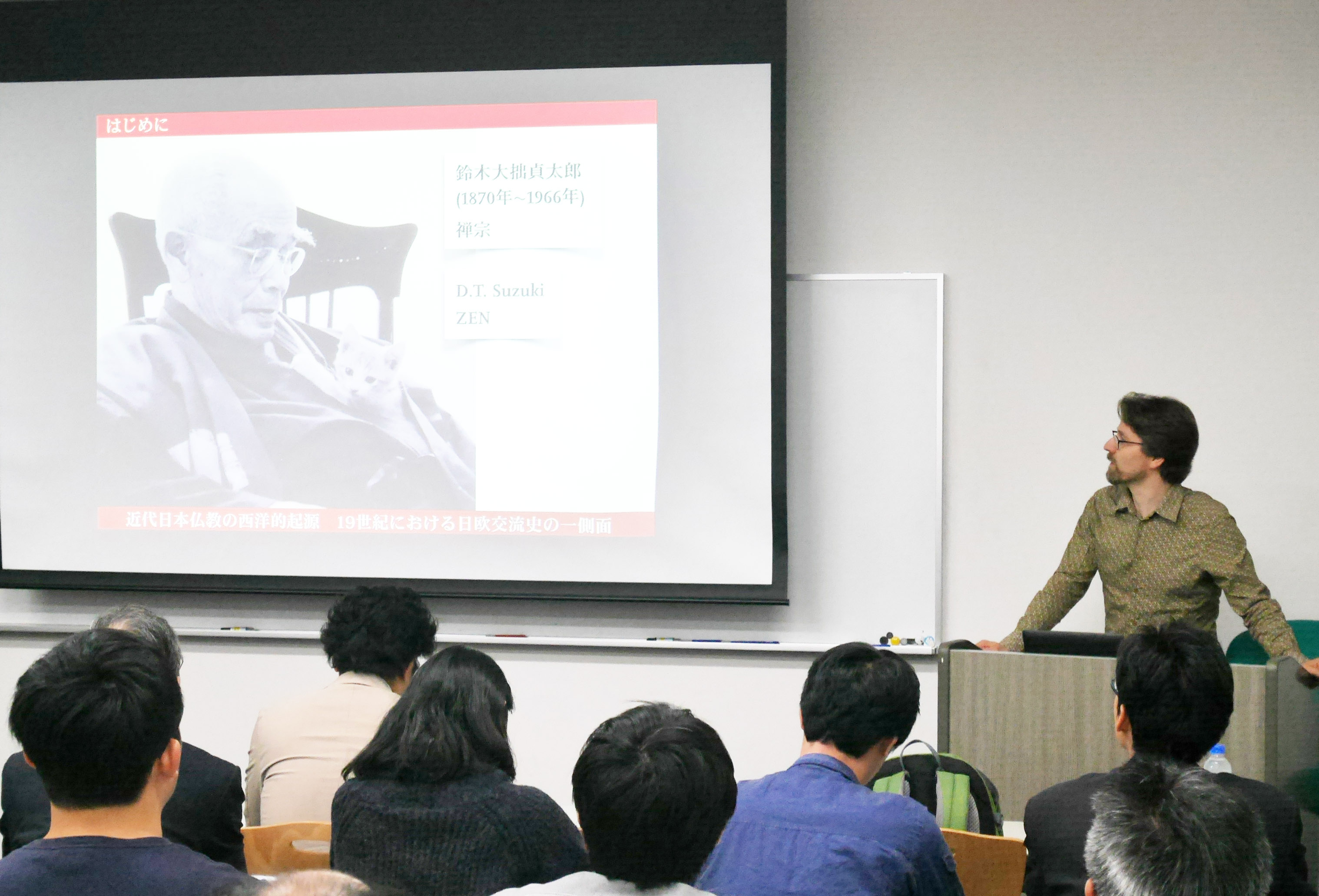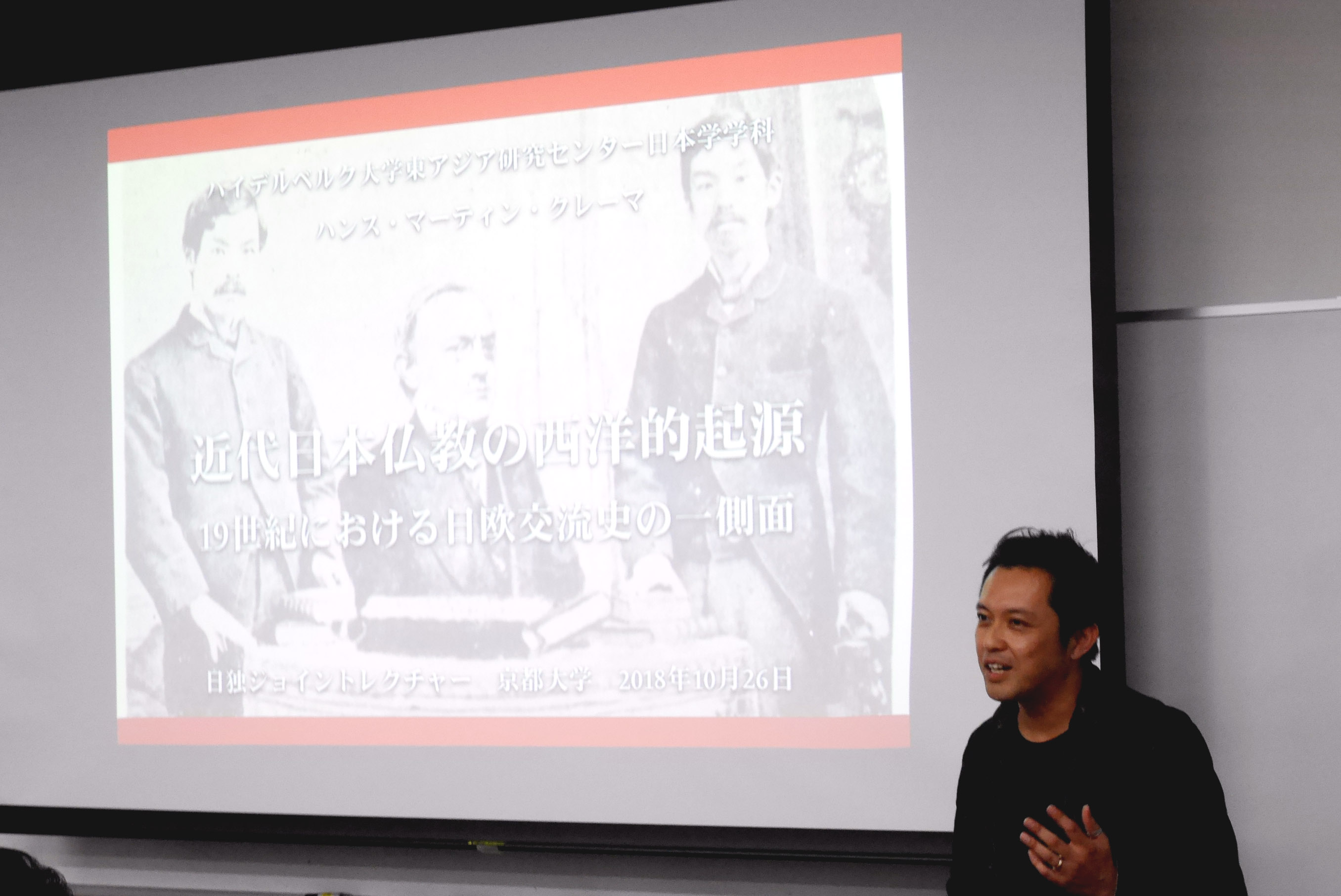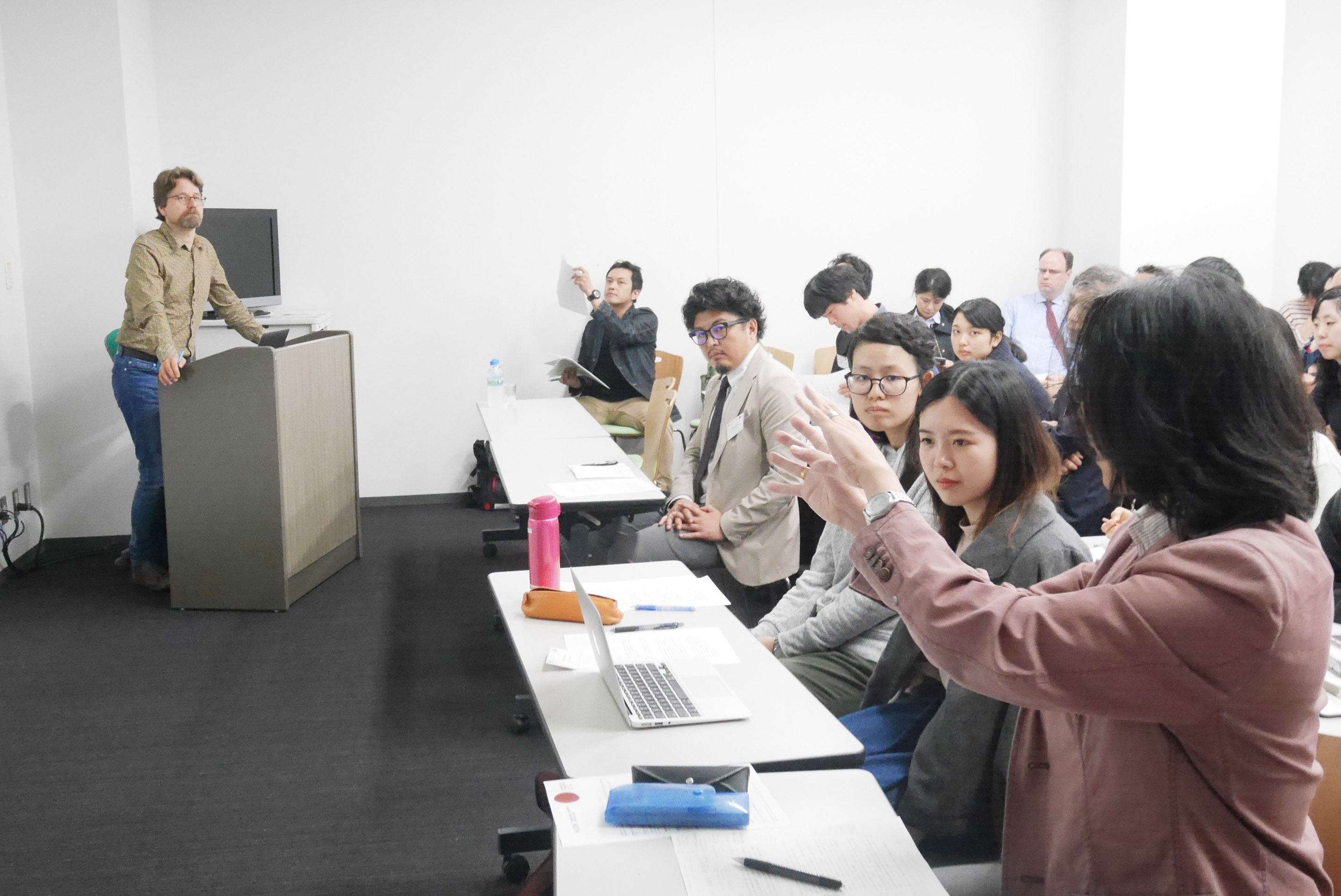On October 26, the Kyoto University European Center co-hosted the 12th Nichi-Doku Joint Lecture titled “The Western Origins of Modern Japanese Buddhism: An Aspect of the History of Exchanges between Japan and Europe in the Nineteenth Century”. More than 40 researchers and students including ones from outside Kyoto University participated in the lecture. The invited guest speaker was Prof. Hans Martin Krämer (Institute for Japanese Studies, Center for East Asian Studies, Heidelberg University), whose major research interests include the history of education, religion, and human-animal relations. His talk was complemented by Associate Prof. Yutaka Tanigawa (Graduate School of Letters, Kyoto University), who studies educational policy and Buddhism in modern Japan.
Putting the spotlight on two major figures of Meiji era Buddhism, Shimaji Mokurai and Nanjo Bun’yu, Prof. Krämer’s presentation explored how exposure to “Western” concepts such as religion-as-belief or the dichotomous view of religion and natural science shaped Japanese thought on the subject.
Shimaji, influenced among others by the liberal protestant minister Emil Gustav Lisco during his stay in Germany, went on to become an outspoken proponent of the separation of religion and state as well as the freedom of religion. However, such ideas were not merely imported but rather appropriated in order to fit a specifically Japanese context. The concept of religion-as-belief, for instance, was used by Shimaji with the intention of reclaiming Buddhist autonomy in the face of state-issued Shinto supremacy.
Nanjo, on the other hand studied Sanskrit and Indian Buddhism in Oxford under the orientalist Max Müller and is primarily known for his compilation of the “Chinese Translation of Buddhist Tripitaka, the sacred canon of the Buddhist in China and Japan” – a comprehensive catalogue of the Sino-Japanese Buddhist canon which continues to be treasured as a reference work by scholars worldwide (also known as the “Nanjo Catalogue”).
Dr. Tanigawa followed up on the lecture by addressing several related questions. What was the exact nature of Shimaji’s ambiguous stance on Christianity (“enemy” and model for Buddhist reform at once)? How did the encounters with Buddhist monks from Japan affect the view of “Japanese religion” in England and Germany? How did the Eastern and Western factions of the Honganji differ in their approach to the appropriation of novel religious concepts?
After the lecture, attendants had the opportunity to ask questions and discuss these and other topics with the speakers – leaving no doubt that there is still a lot to be explored in this exciting area of cross-cultural and cross-religious studies.
Further information on the lecture and the program can be found here.
 |
 |
 |
| Prof. Krämer lecturing | Commentator Prof. Tanigawa | Discussion |


